19th-Century Carriage Clock signed Charles Frodsham, London
1870 London
SOLD
Request Information
Follow Us
19th-Century Carriage Clock signed Charles Frodsham, London
The so-called gorge case has its original gilding. It has bevelled glass panels on all sides so that the movement is entirely visible and is surmounted by a shaped carrying handle. The white enamel dial has a Roman chapter ring, with Arabic five-minute and minute divisions. It is signed and numbered by the maker in the following manner:
Chas. Frodsham & Co.
No 19964 Paris
The time is indicated by a pair of period blued-steel hands. The spring-driven, eight-day movement is
Features
• Eight-day movement
• Original silvered platform escapement
• Repeat button
• Original gilding
• Strike/silent function in the bottom
•
• Glazed all around
Dimensions:
• Height (handle up): 7” (17.5 cm)
Condition
Provenance
Literature
Dimensions
PREVIOUSLY SOLD
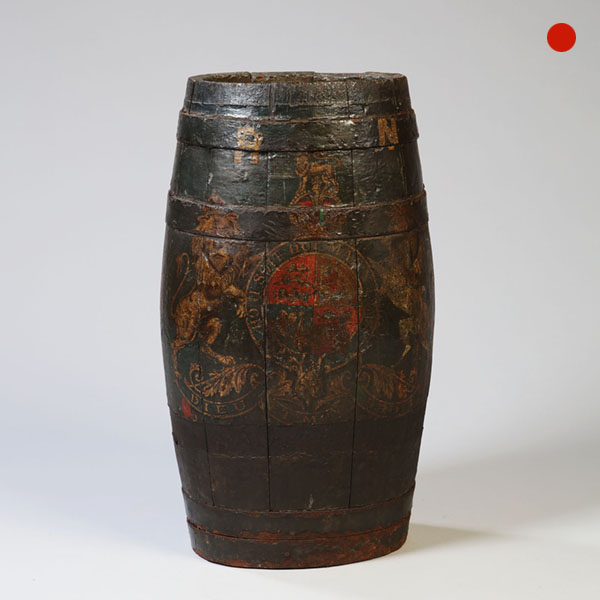
18th-Century Royal Navy Decorated Barrel
A rare 18th-century Royal Navy oak grog or powder barrel, lacquered and decorated with the Royal Coat of Arms. Super piece and makes a fantastic and atmospheric stick/cane stand.
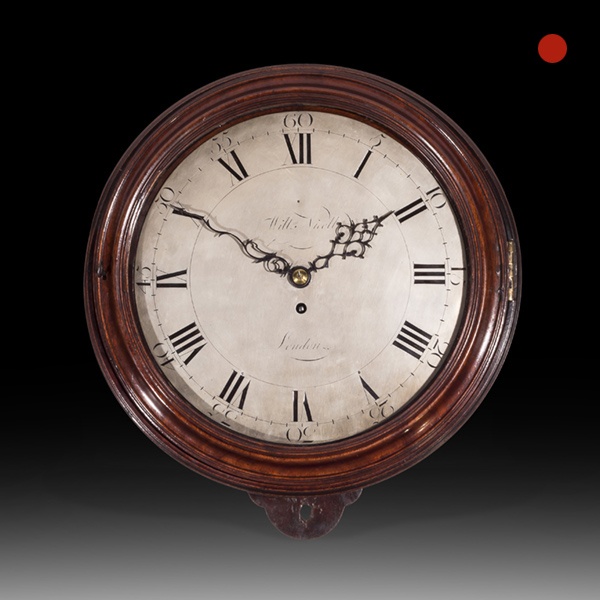
Large Mahogany 18th-Century Dial Clock, William Nicoll, London
The solid mahogany case has a moulded mahogany glazed door, which can be locked on the left-hand side. The original rectangular saltbox is permanently attached to the front and has doors to the side and the bottom.
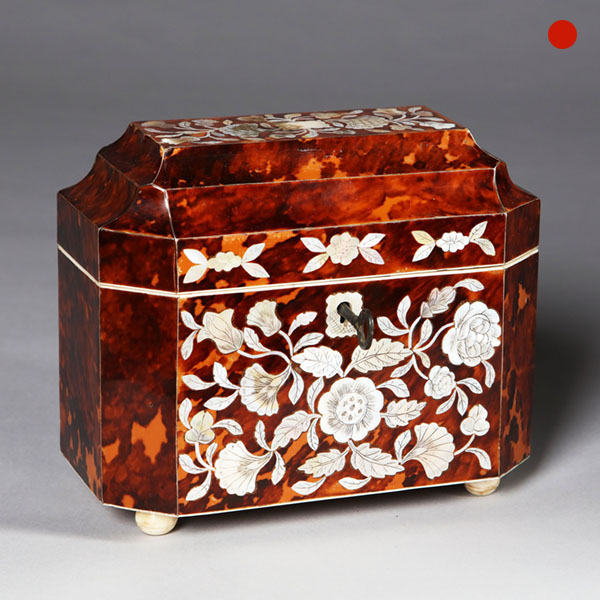
William IV Mother of Pearl Inlaid Tortoiseshell Tea Caddy
William IV Mother of Pearl Inlaid Tortoiseshell Tea Caddy 1800 England SOLDFollow UsWilliam IV Mother of Pearl Inlaid Tortoiseshell Tea Caddy A fine William IV mother of pearl inlaid tortoiseshell tea caddy. The term ‘caddy’ is believed to...
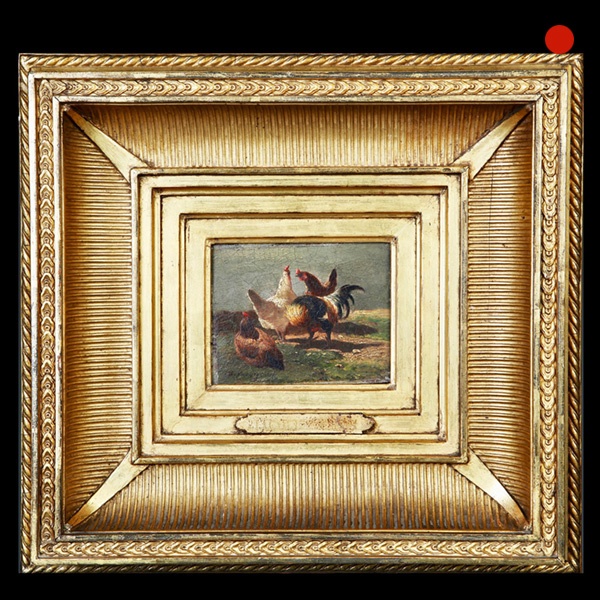
19th-Century Study of a Cockerel and Three Hens Oil Painting on Walnut Panel Charles Emile Jacque (1813-1894)
19th-Century Study of a Cockerel and Three Hens Oil Painting on Walnut Panel Charles Emile Jacque (1813-1894) 1813 to 1894 England SOLDFollow Us19th-Century Study of a Cockerel and Three Hens Oil Painting on Walnut Panel Charles Emile Jacque...
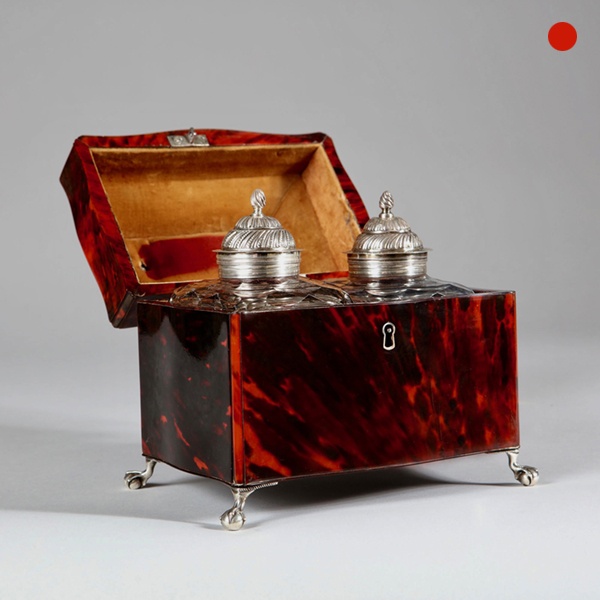
George III Red Tortoiseshell Tea Caddy
A rare exquisitely shaped red tortoiseshell tea caddy, serpentine to all four faces with a pagoda top. The beautifully worked silver handle depicts the Prince of Wales feathers and it is raised on fine ball and claw feet of silver.
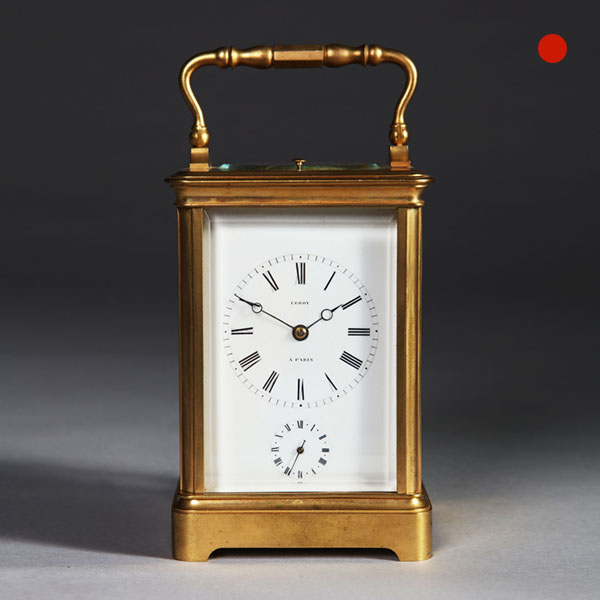
19th-Century Quarter-striking Carriage Clock by Leroy, Paris
The gilt-brass, so-called corniche case has bevelled glass panels on all sides so that the movement is entirely visible. It is surmounted by a shaped carrying handle. The white enamel dial has a Roman chapter ring, with Arabic five-minute and minute divisions.

18th-Century Royal Navy Decorated Barrel
A rare 18th-century Royal Navy oak grog or powder barrel, lacquered and decorated with the Royal Coat of Arms. Super piece and makes a fantastic and atmospheric stick/cane stand.

Large Mahogany 18th-Century Dial Clock, William Nicoll, London
The solid mahogany case has a moulded mahogany glazed door, which can be locked on the left-hand side. The original rectangular saltbox is permanently attached to the front and has doors to the side and the bottom.

William IV Mother of Pearl Inlaid Tortoiseshell Tea Caddy
William IV Mother of Pearl Inlaid Tortoiseshell Tea Caddy 1800 England SOLDFollow UsWilliam IV Mother of Pearl Inlaid Tortoiseshell Tea Caddy A fine William IV mother of pearl inlaid tortoiseshell tea caddy. The term ‘caddy’ is believed to...

19th-Century Study of a Cockerel and Three Hens Oil Painting on Walnut Panel Charles Emile Jacque (1813-1894)
19th-Century Study of a Cockerel and Three Hens Oil Painting on Walnut Panel Charles Emile Jacque (1813-1894) 1813 to 1894 England SOLDFollow Us19th-Century Study of a Cockerel and Three Hens Oil Painting on Walnut Panel Charles Emile Jacque...

George III Red Tortoiseshell Tea Caddy
A rare exquisitely shaped red tortoiseshell tea caddy, serpentine to all four faces with a pagoda top. The beautifully worked silver handle depicts the Prince of Wales feathers and it is raised on fine ball and claw feet of silver.

19th-Century Quarter-striking Carriage Clock by Leroy, Paris
The gilt-brass, so-called corniche case has bevelled glass panels on all sides so that the movement is entirely visible. It is surmounted by a shaped carrying handle. The white enamel dial has a Roman chapter ring, with Arabic five-minute and minute divisions.
YOU MAY ALSO LIKE
No Results Found
The page you requested could not be found. Try refining your search, or use the navigation above to locate the post.
No Results Found
The page you requested could not be found. Try refining your search, or use the navigation above to locate the post.








